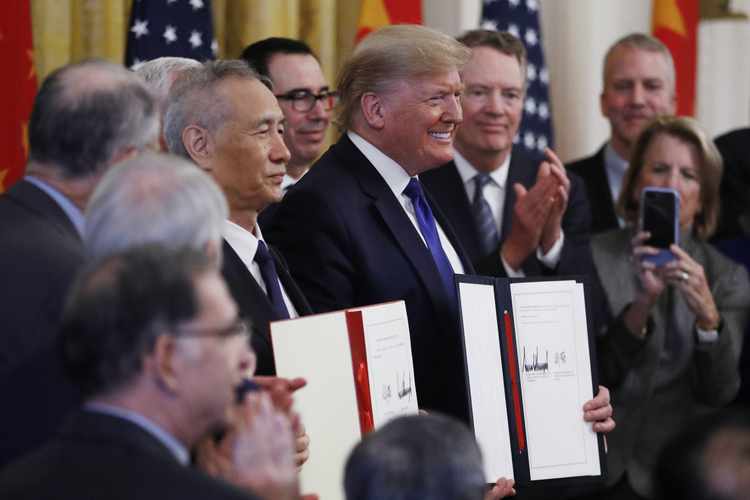President Trump likes to boast that his big trade deal with China is big business for America’s farmers and manufacturers. It’s a centerpiece of his “Americans first” agenda, he says, that it will increase our exports of everything from soybeans to LNG. Trump touted the signing of the “Phase 1” agreement in January as a “sea change” that will allow “Chinese consumers to enjoy the best products in the world: those made, grown and grown here in the United States.”
But so far, the pact is delivering only half of the benefits the president promised.
In Phase 1, China pledged to purchase a total of $ 200 billion more in US products in 2020 and 2021 than in 2017. For this year, the overall target is $ 142.7 billion, representing an increase of $ 63.9 billion. million dollars or 80% above the “baseline”. number just four years ago. The agreement covers three broad categories: agriculture, manufacturing, and energy. It establishes the specific products of each sector “covered” by the pact and establishes individual objectives for the three industries.
Goals are based on annual purchases, not monthly. Still, figures released from January to August show that China is walking slow when it pledged to accelerate, and it would need a super sprint to get close to the more than $ 140 billion mark.
For agricultural products, the annualized goal so far this year is $ 22.3 billion. China has what seems like a large deficit, having bought only $ 9.6 billion in our agricultural products through August. In manufactured goods, China did better: it bought $ 33.2 billion from our factories, meeting 60% of the annual quota of $ 55.4 billion. In energy, China imported $ 3.5 billion worth of natural gas and oil from the United States, accounting for about a quarter of the eight-month ghost of $ 17.4 billion.
In total, China’s prorated target for the first eight months is $ 95 billion (which is 2/3 of the $ 142.7 billion in the calendar year). But so far this year, the world’s second-largest economy has imported almost exactly half of that figure, $ 47.6 billion, in American goods. Simply put, China met just a third of its commitment by 2020. The deal failed to cover 39% of the products that US companies shipped to China in 2017, an area that includes tech equipment from PCs to semiconductors. In that “discovered” category, our exports totaled $ 19.1 billion through July, 30% less than in the same period in 2017.
For Bown, the ambitious goals set in Phase 1 remain an advantage even though China is not meeting them. He believes that purchases could pick up in the fall, as US soybeans are a big seller in China and the harvest is yet to come. Still, he says the targets were unattainable from the start, because so far they exceeded previous shipments in all three sectors, and China was not growing fast enough to consume much larger quantities than in 2017. “It also faces capacity constraints that they did … “Impossible to produce all the goods that China promised to buy,” he says, noting that power producers complained that they could not extract enough oil and LNG to fulfill the orders promised by China.
The deal is still good, he says, because it prevents the deterioration in trade relations between China and the United States from getting even worse. “We are now imposing restrictions on the export of our own semiconductor and chip-making equipment to China,” says Bown, “and those are products that our companies want to sell to China and that China needs.” While the Trump administration calls for trade in these and other products to stop, Phase 1 keeps exports flowing in a triumvirate of agriculture, manufacturing and energy.




